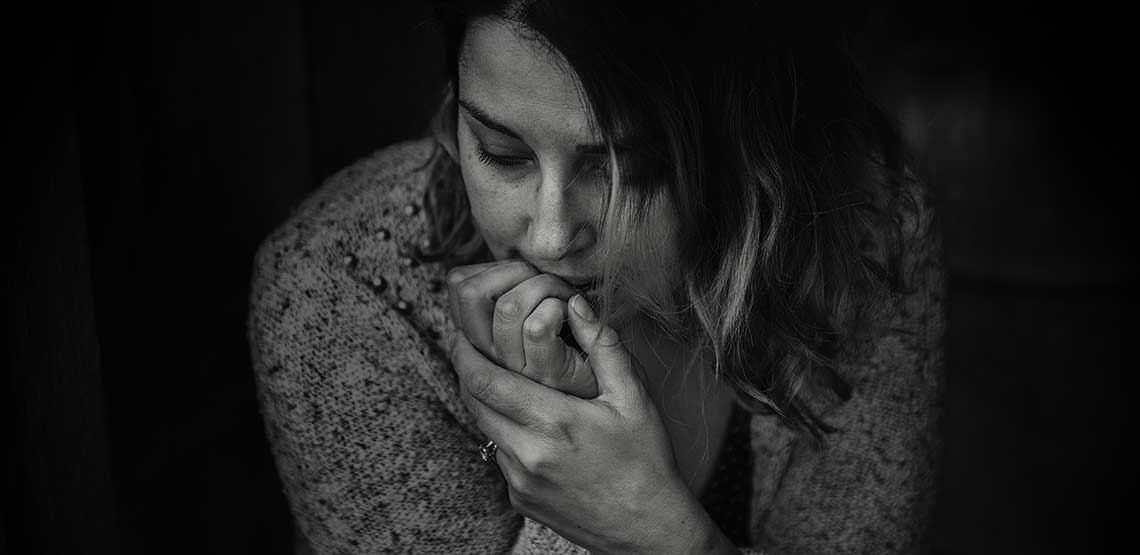Recognizing the Signs
It is not unusual to experience anxiety or panic from time to time. They are normal reactions to threats, uncertainties, or problems arising in our daily lives. In some cases, however, they may signify a psychological or clinical condition. While anxiety and panic attacks are often used interchangeably, they are not the same thing. They are often confused with one another because of their overlapping symptoms. Identifying your symptoms and what triggers them is important in developing useful coping skills. So what is the difference when it comes to an anxiety attack vs a panic attack? Let’s take a look.
Anxiety Attacks
An anxiety attack is not an official clinical term. People might use it to describe different sorts of emotions, such as worry, fear, nervousness, or a general feeling of unease. You may experience an anxiety attack with or without a disorder. Many people with a panic disorder may also have anxiety attacks.
If anxiety is a normal human emotion, when does it become a disorder?
The hallmark of an anxiety disorder is extreme worry or tension that tends to be greater than the perceived threat. A person with this condition fixates on the worst possible outcomes, always expecting that things will go badly. They may experience associated physiological changes, which include sweating, a pounding heart, shortness of breath, and/or an upset stomach, among other things.
Related Search Topics (Ads)
The worrying involved in an anxiety disorder is often excessive. While it’s common to feel a bit anxious in certain social situations, being afraid to dine out, shop for groceries, or go to work makes it difficult for someone to live normally. Excessive fears and worries that interfere with your daily activities require individualized help from a medical professional.
Some of the most common symptoms of anxiety attacks include:
- Irrational fears.
- Extreme worry.
- Rapid breathing.
- Negative thoughts.
- Self-doubt.
- Fatigue.
- Restlessness.
- Sleep problems.
- Muscle tension.
- Indigestion.
- Irritability.
The Effects of Anxiety on Performance
Anxiety is not always a bad thing. According to studies, normal anxiety is adaptive and helpful: it improves functioning and helps us prepare for a crisis. Performance efficiency is said to increase as the level of anxiety increases, but only up to a point. When it gets too high, the person might be unable to cope and the anxiety triggers distress and impairs functioning.
Anxiety Disorders
Anxiety disorders refer to a group of related but distinct mental illnesses that influence a person’s way of thinking and produce distortions of perception. They are the most common mental disorders, affecting about 18.1% of the U.S. population, yet only 36.9% of sufferers receive treatment.
In the fifth edition of the Diagnostic Statistical Manual of Mental Disorders, known as the DSM-5, there are 11 mental health conditions listed under anxiety disorders and panic disorder is one of them. Other major diagnostic types include:
- Agoraphobia.
- Specific phobia.
- Social anxiety disorder.
- Generalized anxiety disorder.
- Separation anxiety disorder.
Panic Attacks
Recurrent panic attacks without triggers are usually a symptom of panic disorder and can also be seen in other mental disorders (e.g., depression, phobia, and other anxiety disorders). Individuals diagnosed with panic disorder also exhibit persistent fear of having additional attacks.
Anxiety Attack vs Panic Attack: The Difference
Panic attacks and anxiety attacks have similarities and differences. Some of the most frequently reported symptoms of panic attacks are a rapid or irregular heart rate and shortness of breath, which can also occur in anxiety. However, the main symptoms of an anxiety attack are restlessness, tiredness, irritability, and hypervigilance (exaggerated fear of a potential threat or danger).
A person with a panic attack will have four or more of the symptoms below:
- Rapid heartbeat.
- Sweating.
- Shortness of breath.
- Trembling.
- Choking sensation.
- Chest pain.
- Nausea or abdominal discomfort.
- Dizziness or lightheadedness.
- Numbness.
- Feeling detached from your environment (derealization) or detached from oneself (depersonalization).
- Fear of losing control or “going crazy.”
- Severe fear of dying.
Onset
A panic attack may seem to appear without warning while anxiety gradually intensifies over some time. Sometimes anxiety is a prelude to a panic attack. Individuals with nocturnal panic attacks are awakened from sleep in a state of panic, have trouble falling asleep and maintaining sleep, and exhibit more severe symptoms than a classic panic attack.
Intensity
Anxiety attacks are less intense than panic attacks. People who are prone to panic attacks may experience symptoms similar to those of a heart attack. Other times a patient suffers from both a panic disorder and physical illness, which can be challenging to treat.
Duration
The signs and symptoms of a panic attack build rapidly to a peak within a few minutes and are accompanied by a sense of impending doom. On the other hand, the discomfort associated with anxiety varies in duration and the symptoms are often chronic.
Treatment Options
Some people with anxiety and panic get better without treatment. But if the attacks are occurring frequently (e.g., once a week or more) over many years, it is important to seek medical help.
The good news is anxiety and panic attacks are treatable. Only a mental health professional can diagnose you if you have a mental disorder. Treatment options depend on the type of disorder you have.
Medications
There are different types of drugs used for managing symptoms of anxiety and panic.
- Benzodiazepines: Reduces general anxiety and the number and intensity of attacks in panic disorder.
- Selective serotonin reuptake inhibitors (SSRIs): Useful for both anxiety and panic.
- Tricyclics: Reduces the intensity of attacks in all anxiety disorders.
- Monoamine oxidase inhibitors (MAOIs): Used for anxiety and panic but can cause major side effects.
- Beta-blockers: Sometimes used to suppress the physical symptoms of anxiety.
Psychotherapy
Different forms of talk therapy can reduce anxiety and panic attacks. By talking regularly with a mental health professional, you will be able to understand the behaviors and emotions that contribute to your symptoms, so you can learn how to make positive changes. Some novel therapies like neurofeedback and trans magnetic stimulation are also being explored with varying results.
Self-Help
Lifestyle strategies, diet changes, stress reduction, relaxation methods, and mindfulness techniques can all help in improving your mood and reducing your symptoms. Herbal supplements are purported to alleviate symptoms of anxiety and panic. While some of these show promise, they are still under scientific investigation.
Talk to your doctor or therapist before taking any supplement for anxiety, as many of these natural products can interfere with certain medications.
Article Resources
- Anxiety and Depression Association of America (Panic Disorder)
- The Journal of Psychiatry and Neurological Sciences (Nocturnal panic attack: is it another subtype?)
- Diagnostic and Statistical Manual of Mental Disorders, Fifth Edition (Anxiety Disorders)
- MSD Manual (Panic Attacks and Panic Disorders)
- American Psychological Association (Anxiety Disorders Translational Perspectives on Diagnosis and Treatment)

